Invented by Craig SAWYERS, Duvas Technologies Ltd
Multipass absorption cells are used to enhance the sensitivity of spectroscopic measurements by increasing the path length of the light through the sample. This allows for more accurate and precise measurements of trace gases and other compounds. Input-output optical systems are an essential component of these cells, as they enable the efficient transmission of light into and out of the sample.
One of the key factors driving the market for input-output optical systems is the increasing demand for high-precision gas analysis. With growing concerns about air pollution and climate change, there is a need for accurate measurements of greenhouse gases, volatile organic compounds, and other pollutants. Input-output optical systems enable researchers and scientists to obtain reliable data for environmental monitoring and research purposes.
Moreover, the advancements in technology have led to the development of more compact and efficient input-output optical systems. These systems now offer higher transmission rates, improved signal-to-noise ratios, and reduced losses, making them highly desirable for various applications. The ability to integrate these systems into portable and handheld devices has further expanded their market potential.
The market for input-output optical systems for multipass absorption cells is also driven by the increasing adoption of spectroscopic techniques in industries such as pharmaceuticals, food and beverage, and oil and gas. Spectroscopic analysis is widely used for quality control, process monitoring, and product development in these industries. Input-output optical systems enable accurate and real-time measurements, helping companies ensure the quality and safety of their products.
Furthermore, the market is witnessing significant growth due to the rising investments in research and development activities. Governments, academic institutions, and private organizations are investing heavily in developing advanced spectroscopic techniques and equipment. This has created a favorable environment for the growth of the input-output optical systems market.
However, there are a few challenges that the market faces. One of the major challenges is the high cost associated with these systems. The advanced technology and precision engineering required to manufacture input-output optical systems make them relatively expensive. This can limit their adoption, especially in smaller research labs and budget-constrained industries.
Additionally, the market faces competition from alternative technologies such as cavity-enhanced absorption spectroscopy and photoacoustic spectroscopy. These techniques offer their own advantages and may be preferred in certain applications, posing a challenge to the growth of input-output optical systems.
In conclusion, the market for input-output optical systems for multipass absorption cells is experiencing steady growth due to the increasing demand for high-precision gas analysis and spectroscopic techniques. Advancements in technology and the expanding applications of these systems are driving their adoption across various industries. However, the high cost and competition from alternative technologies remain challenges that need to be addressed. With ongoing research and development efforts, it is expected that the market will continue to grow and evolve in the coming years.
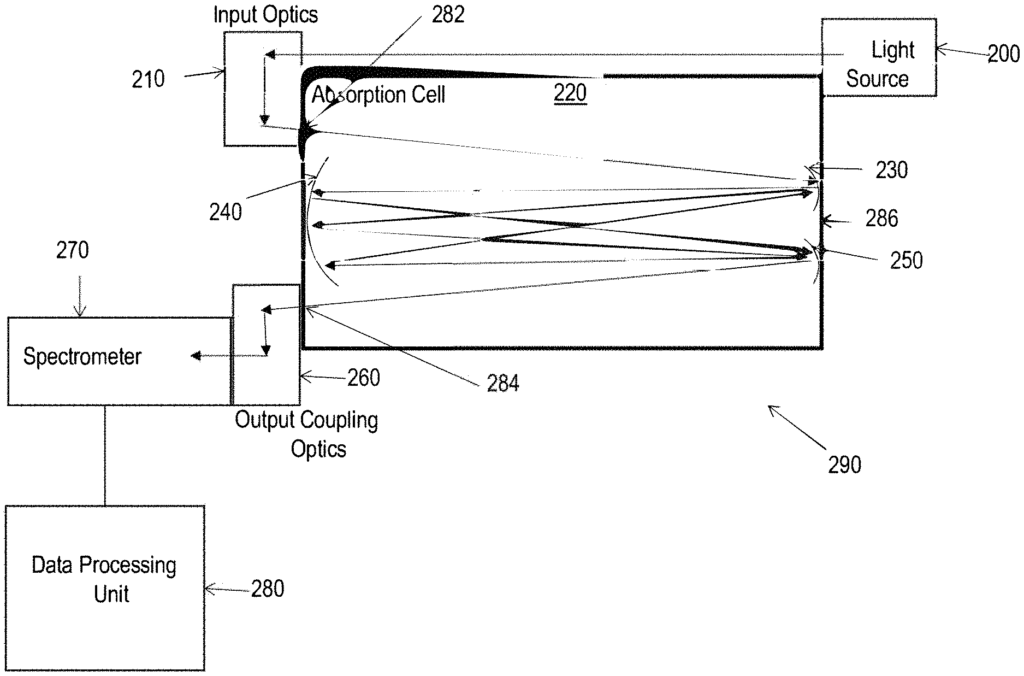
The Duvas Technologies Ltd invention works as follows
The present disclosure relates to systems and methods for detecting species in a fluid by using a spectrometer and a multi-pass cell. The absorption cells includes a plurality mirrors that are arranged so a detection beam can traverse multiple passes of the fluid inside the cell. In some cases, the reflection of the detection light by the multiple mirrors can form optical paths on more than one plane. The system includes a unit that is configured to receive spectral information from the spectrometer and process it. In some implementations the electronic unit communicates over a communications interface with at least one computing unit to send a part of the spectral information for processing. The electronic unit can also receive data processed by the computational unit.
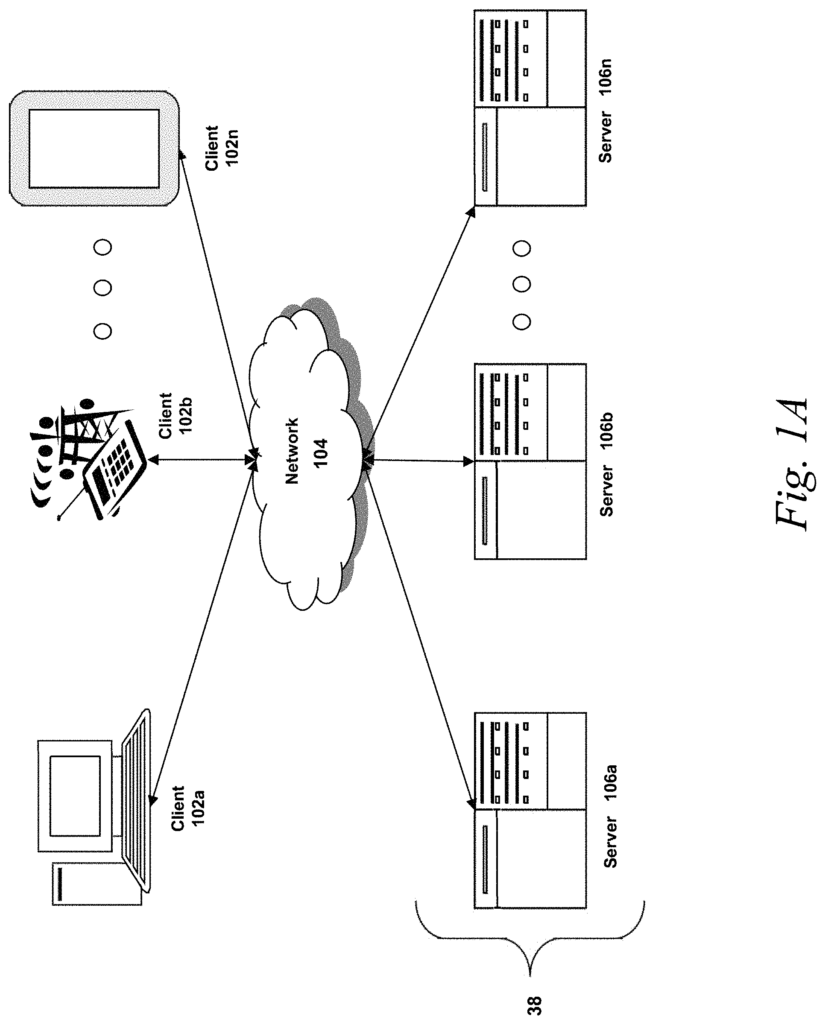
Background for Input-output optical systems for multipass absorption cells
The optical spectrometer measures the presence or lack of light in various wavelengths. When combined with a light source known, it can be used to identify different species of liquid or gas by observing what wavelengths are absorbed. Each gas or liquid species has unique spectral characteristics that can be used to identify it.
In one aspect, a system to identify species in liquid or gas includes a light, an input coupling unit that couples the light through a multi-pass cell, an optical coupling unit that couples the exiting light from the cell to a spectrumrometer, and an electronic unit which analyzes the data received by the spectrometer. The light source and spectrometer is located at the opposite ends of an optical cell. The input optical unit comprises an air-spaced doublet lens with achromatic coating and a prismatic telescope. The output optical unit includes a fused-silica prism, fused-silica lenses, and an off-axis parabolic reflector. The system temperature is controlled to minimize condensation caused by moisture in the surrounding environment.
In another aspect of the invention, a light sources includes a plurality LEDs or lasers, each having a slightly different wave length, and a spectrumrometer that detects the light after it has passed through a material sample. The light source and spectrometer are constructed with individual ultra violet leds. The light source and spectrometer construct the plurality LEDs using the ultra violet LEDs that are fabricated on a single die. The light source and spectrometer construct the plurality using infrared individual LEDs. The light source and spectrometer are constructed with infrared leds that have been fabricated on a single die.
In another aspect of the invention, a light-source includes a plurality LEDs, an ultraviolet flourescer and a spectrometer that detects light emitted by the light-source after it has passed through a material sample. The light source and spectrometer are constructed with individual ultra violet leds. The light source and spectrometer construct the plurality LEDs using the ultra violet LEDs that are fabricated on a single die. The light source and spectrometer construct the plurality using infrared individual LEDs. The light source and spectrometer are constructed with infrared leds that have been fabricated on a single die.
In another aspect of the invention, the light source comprises a single LED and a flourescer. The spectrometer detects the light after it has passed through the sample material. The LED emits ultra violet in the light source and spectrometer. The LED emits infra red light when used as a light source or spectrometer.
In another aspect of an apparatus, the optical paths of the multi-pass cell are defined by reflections from a plurality mirrors configured in such a way that the optical pathways lie on a plurality planes. The optical paths in the multi-pass cell are configured so that the light beams entering or leaving the cell do not clip on any one of the mirrors. A plurality electrically-stimulated actuators allow the position of a plurality mirrors in the multipass optical cell to be changed. A plurality electrically stimulated actuators can alter the shape of a plurality mirrors in the multi-pass optic cell. One or more mirrors in the multi-pass cell are not circular. A plurality electrically stimulated actuators in the multi-pass cell can adjust the position of a number of mirrors. One or more mirrors have a non-circular shape. A plurality electrically stimulated controllers can alter the shape of a number of mirrors in the multi-pass cell. One or more mirrors may be non-circular. The metal parts of the multi-pass cell have a fluorocarbon coat.
In another aspect of the invention, a system is provided for identifying species of gas or liquid. The system includes a light, a spectrometer, and a local unit of electronic analysis that receives data from the spectrometer. This unit of electronic analysis communicates with multiple other computing and storage units, commonly known as the cloud. At least part of the communication mechanism in the system is wireless. In the system the analysis of spectrometers data is performed partially on the local electronics unit and partly in the cloud. The system allows additional species identification data to be transferred to the local electronic unit from the cloud, thereby altering the local identification capabilities.
The system can be divided into four different aspects.
In some embodiments the input optical coupling includes a doublet achromatic lens with an air-spaced spacing and a periscop. In some embodiments the output optical unit includes a fused-silica prism, fused-silica lens, and a parabolic off axis mirror. In some embodiments the output optical unit comprises a fused-silica prism, fused-silica lens, and off axis parabolic reflector. The system may also include a temperature control unit for controlling the temperature.
In a second aspect, the system for identifying species within a liquid includes a light-emitting diode (LED) source, wherein the plurality emits light of a different wavelength, and a spectrometer that is configured to detect light generated by each of the plurality LEDs after it has passed through the fluid. In some embodiments, the plurality includes a plurality ultra-violet leds. In one or several embodiments, a plurality LEDs are arranged on a single die of semiconductor. In one or several embodiments, the LEDs are a plurality infra red LEDs. In one or several embodiments, a plurality infra red LEDs are disposed on one semiconductor die. In some embodiments, a fluorescence-agent is also included in the light source.
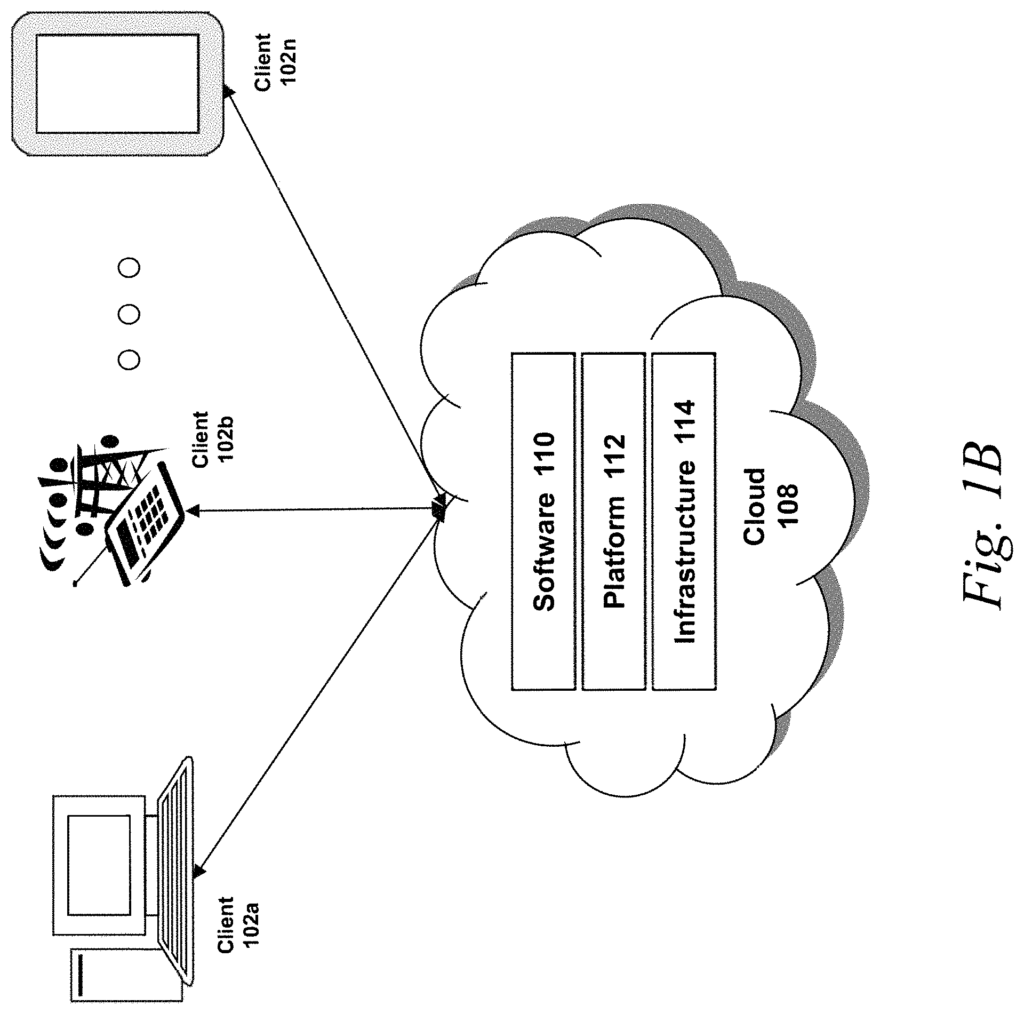
In another aspect of the system, it includes a light-emitting diode (LED) with a fluorescence agent, and a spectrometer that is configured to detect light emitted by the plurality LEDs after they have passed through the fluid. In some embodiments, the LED is ultra-violet. In one or more of the embodiments, a single LED can be an infra red LED.
In a second aspect, a multipass absorption cells for containing fluids, the cell configured receive a detection from a source of light, includes a number of mirrors placed within the cell at relative positions so that the detected light is reflected by each of the multiple mirrors and forms optical paths in a variety of planes. In some embodiments, the entire perimeter of a beam incident on any of the plurality mirrors lies within the mirror’s perimeter. In one or several embodiments, a number of electrically-stimulated position actuators are also included in the system. These actuators can be used to adjust the position of one of the mirrors. In one or several embodiments, the system also includes a number of electrically-stimulated position actuators that correspond to the plurality mirrors and are configured to change the shape of one of the mirrors. In one or several embodiments, one or more of the mirrors are not circular in shape. In one or several embodiments, one of the many mirrors has a non-circular shape. In one or several embodiments, one of the plurality mirrors has a non-circular shape. In some embodiments, a fluorocarbon layer is also applied to at least one metal surface.
Another aspect of a system to identify species in fluids includes a light-source generating a detector light. The system also includes a detector light and a spectrometer that can receive the light after it has passed through fluid. It will then generate spectral information related to this light. The system includes a further electronic unit configured to process spectroscopic information received from the sensor. This electronic unit has at least a communication interface for communicating with at least ONE computational unit, and AT LEAST ONE storage unit. In some embodiments, the wireless interface is used as the communication interface. In one or several embodiments, the unit is configured to communicate a second portion of spectral information to the computational unit via the communication interface. In one or more of the embodiments, it is also configured to receive species identification data from the computing unit or storage unit that differs from the species identification data present in the electronic device.
The following sections of the specification with their respective contents can be useful for reading the descriptions of various embodiments:
Section A” describes a computing environment and network environment that may be helpful in the practice of embodiments.
Section B describes methods and systems for detecting gaseous and vaporous species by using a spectrometer with a multi-pass cell.
A. Computing and Network Environment.
Before we discuss specific embodiments of this solution, it might be useful to describe aspects such as the operating environment and associated system components (e.g. hardware elements) in relation to the methods or systems described herein. Referring to FIG. FIG. 1A shows an example of a network environment. The network environment includes one to three clients 102a-102n (also known as client(s), 102 and client(s), 102), client node(s), 102 and client(s), 102), client computer(s), 102, and client machine(s), 102), client client(s), 102, 102, 102, 102, 102, 102, 102, 102, 102, 102, 102. Client device(s), 102. Endpoint(s), 106 or remote machine(s). A client 102 can be used as both a client node that seeks access to server resources and as a server that provides access to server resources for other clients.
Although FIG. FIG. 1A depicts a network of 104 between clients 102, servers 106. However, clients 102 may be on the same network (104). Some embodiments may have multiple networks 104 connecting the servers 106 and clients 102. One of these embodiments may have a network 104. A network 104 could be a private network, while a network (not shown), may be public. A network 104 could be a private network, while a network 104.1 may be a public network. A public network. Networks 104 and104 are also possible in another embodiment. Both networks 104 and 104 may be private networks.
The network 104 can be connected via either wired or wireless links. Digital Subscriber Line (DSL), coaxial cables lines or optical fiber lines can all be connected via wired links. Wireless links can include BLUETOOTH and Wi-Fi (Worldwide Interoperability for Microwave Access) as well as an infrared channel, satellite band, or BLUETOOTH. Wireless links can also include any cellular network standard used to communicate between mobile devices. This includes standards that are 1G, 2G or 3G. If the network standards meet a specified or set of standards, they may be considered one or more generations of mobile telecommunications standards. The 3G standards, for example, may correspond to the International Mobile Telecommunications-2000 (IMT-2000) specification, and the 4G standards may correspond to the International Mobile Telecommunications Advanced (IMT-Advanced) specification. AMPS, GSM and UMTS are some examples of cellular network standards. Cellular network standards may use various channel access methods e.g. FDMA/TDMA/CDMA, SDMA. Different types of data can be transmitted using different standards and links in some embodiments. Other embodiments allow the transmission of identical data via different standards and links.
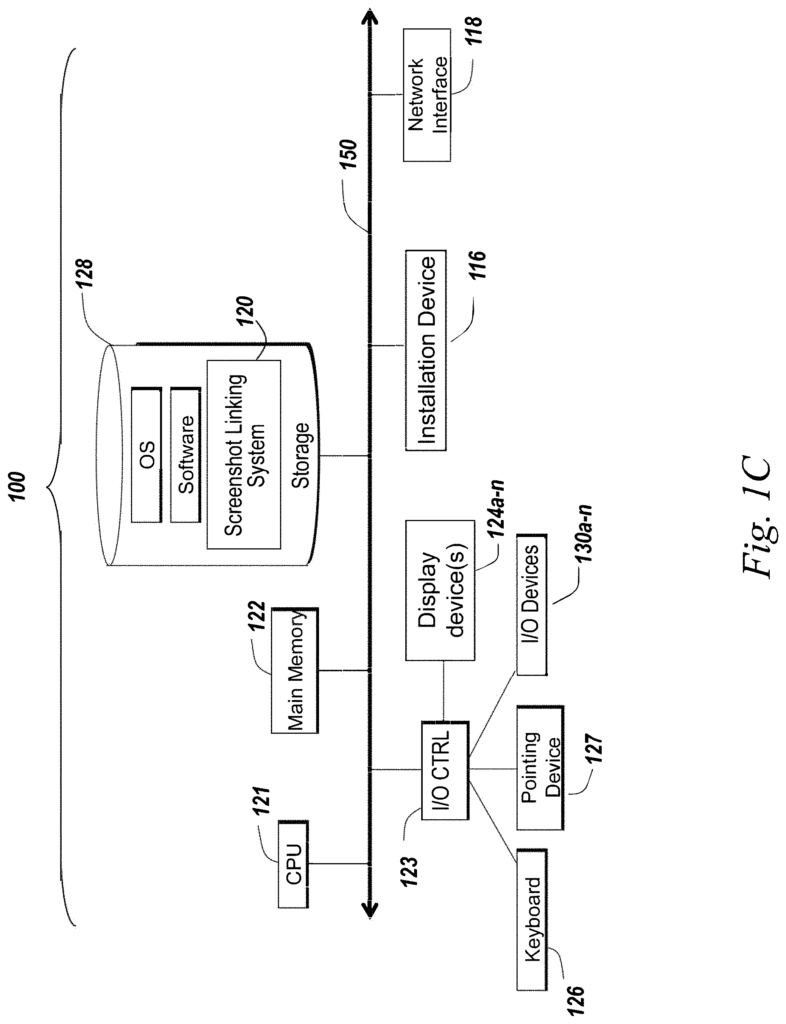
The network 104 can be any type or form of network. The network 104’s geographical coverage can vary greatly. It could be a body-area network (BAN), personal area network, or a local-area network. Intranet, metropolitan area network (MAN), wide area network(WAN), or Internet. The network 104’s topology can be any type and could include any combination of: bus, star or ring, tree, point-to-point, bus or star. The network 104 could be an overlay network that is virtual and sits on top one or more layers from other networks 104?. The network 104 can be any network topology known to ordinary skill in the art and capable of supporting operations. The network 104 can use different protocols and layers, such as the Ethernet protocol, TCP/IP, the ATM (Asynchronous Transfer Mode), SONET (Synchronous Optical Networking), or SDH (Synchronous Digital Hierarchy). TCP/IP’s internet protocol suite can include the application layer, transport layer and internet layer (including IPv6). Network 104 could be classified as a broadcast network or a telecommunications network. It also may include a data communication network or computer network.
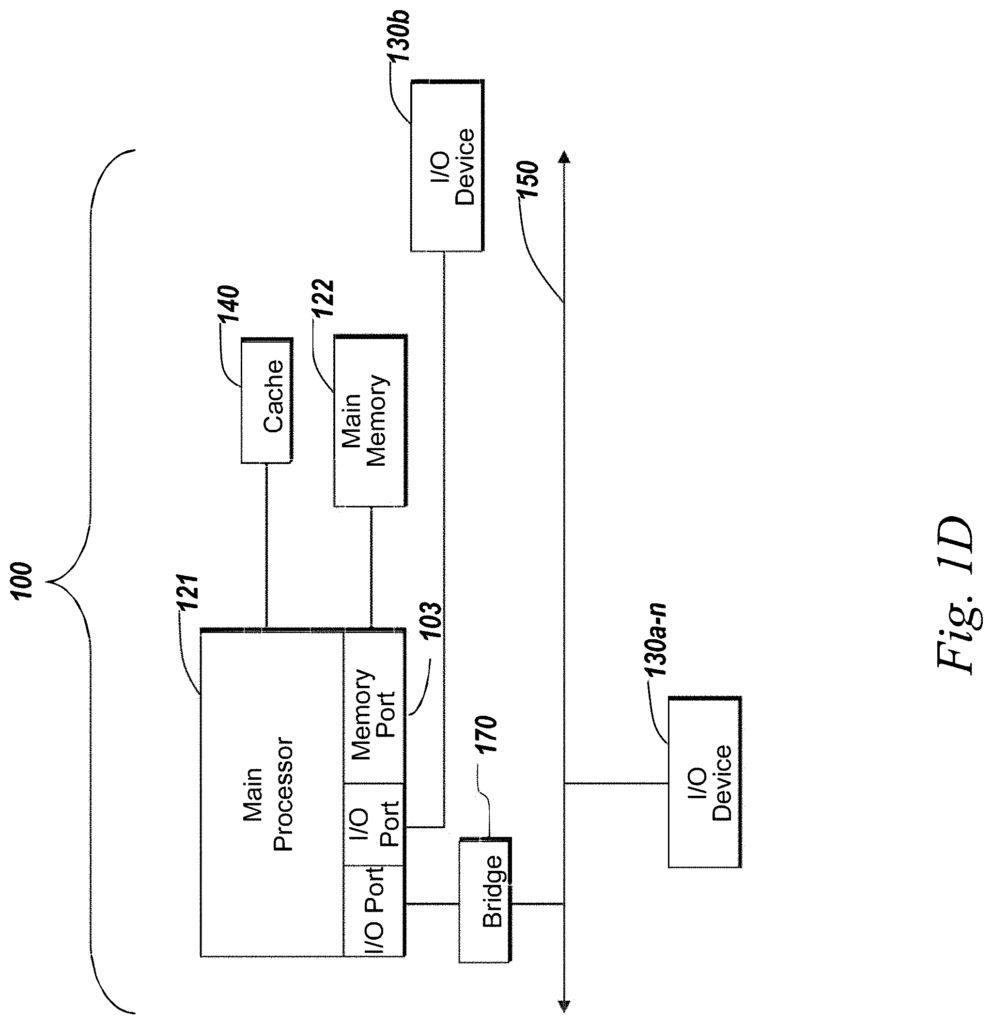
Click here to view the patent on Google Patents.
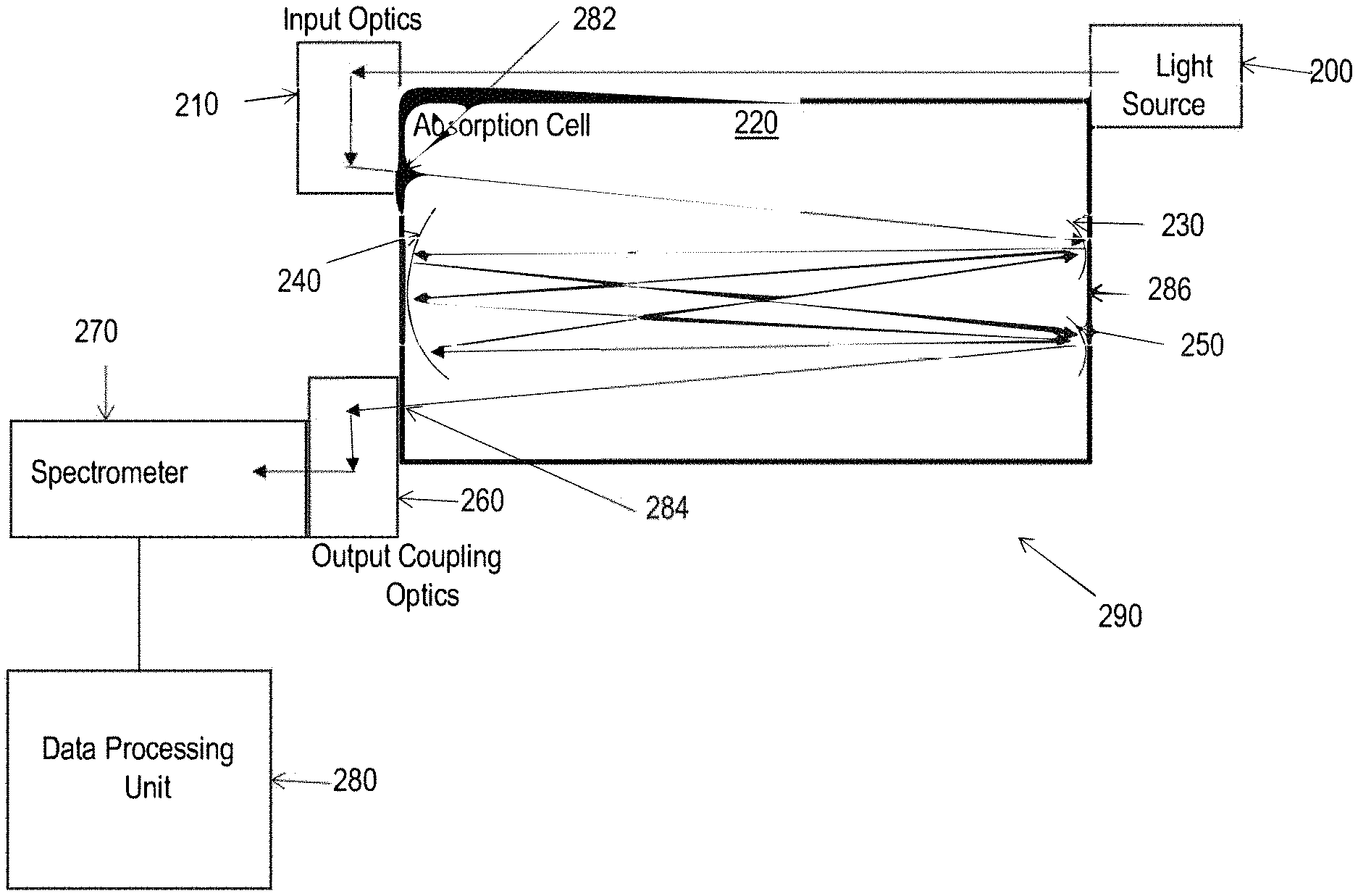
Leave a Reply